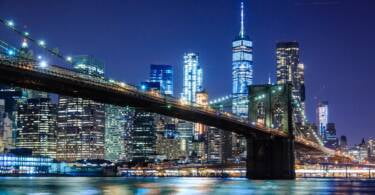Paris. London. Milan. While tourists have been visiting these much-loved cities in their droves, one of Europe’s best cities has been silently flourishing.
Paris. London. Milan. While tourists have been visiting these much-loved cities in their droves, one of Europe’s best cities has been silently flourishing. Berlin, Germany’s capital, has been recreating itself since the fall of the iconic Berlin Wall, out-rivalling all cities for the unofficial city of culture.
Boasting iconic history and culture and world-famous luxury shopping, Berlin offers tourists and residents alike more than most cities. From popping in to where Chancellor Angela Merkel makes laws to shopping till you drop at world-famous Kurfürstendamm, the backdrop of beautiful architecture and the flourishing arts and culture scene add sparkle and magic to a city that once was deeply divided.
Along with Berlin’s widespread use of the English language, low rents and the birthplace of technology start-ups such as SoundCloud attracting an eclectic range of people, the city can boast the accolade of being a grand European all-rounder.
Whilst summer is widely lauded as the best time to visit Berlin, Christmas holidays has showcased the beauty of the city. Here are my top tips to make the most of all the delights Berlin has to offer in the winter break:
Ways to tour Berlin
If you’re only in Berlin for a day and have limited time, take the Berlin City Bus Tour – that way you will be able to take in the most of the historical and famous sights and attractions of Berlin in under two hours. With commentary in many different languages and for only €12 for students and €15 for adults, you can hop on and hop off again all around the city, making it a very valuable and worthwhile spend.
Alternatively, see the sights by bike, splendid in great weather due to green areas and rivers to glide along. Central Berlin, supplied with bike-rental outlets, has a very welcoming cycle culture (something that London would do well to adopt) and separates lanes for cyclists. Your best route would be to begin at the Reichstag for a quick tour of the must-do sights. Rent your bikes at Finding Berlin Tours rent out bikes for a mere €13 a day.
If you can’t brave the winter cold, Berlin’s excellent transport system means you can get around anywhere in the city 24 hours a day through its interconnected underground rail, rail, buses, trams and ferries. Prices are also far cheaper than its British counterpart.
Culinary delights
Pork is a staple for most of the German population, so if you’re a pork-lover, you’re in luck. Berlin is bustling with take-away joints – most famed is Currywurst, situated on all corners of berlin. A Berlin culinary favoured by the natives, it is a combination of pork sausage, ketchup, curry powder served with bread roll or fries. As an alternative, try theBerlin Döner or the Buletten meatballs.
If you have a sweet tooth, make sure to try thePfannkuchen, a baked pastry glazed on hot oil and stuffed with jam. Kartoffelpuffer is a tasty alternative to fries; they are grated potatoes usually served with sweet applesauce. To sample farmers’ markets’ regional produce, buy at Winterfeldt Markt and Markthalle IX.
Shopping
For traditional, classic department stores, visit Friedrichstraße, the street for big name designer stores and KaDeWe, Berlin’s answer to Harrods, Europe’s second largest department store. For independent retailers and boutiques, visit Torstraße and Mulackstraße and source vintage clothing at Prenzlauer Berg.
Kurfürstendamm, rated continually as one of the best shopping districts in Europe boasts a large selections of stores and cafes accompanied by a great ambience.
And winter break certainly wouldn’t be the same without Christmas markets situated all over Berlin where you can stroll among the many fairs and markets. For a family-friendly alternative, visit the Christmas markets on Alexanderplatz where there is a large ice rink.
Museums and galleries
Spend half a day exploring Berlin’s Jewish history – visit the Jewish History Museum (Jüdisches Museum) which traces the arrival of the Jews and their contributions to Germany and explores the hardships they faced. The Holocaust Memorial (also known as Denkmal für die Ermordeten Juden Europas) effectively chronicles the Nazis’ treatment and extermination of the Jews.
To learn more about Germany’s Nazi Germany reign, the Tophopraphy of Terror is an outdoor museum on the site of the wartime SS and Gestapo offices.
For a more visual history, visit the East Side Gallery, one of the best outdoor open air galleries in Berlin. It came about when a section of the Berlin Wall was left standing and artists were invited to paint a section on it, symbolising a memorial to freedom. The Gallery thus preserves the paintings made on the eastern side when the Wall was brought down. Nowadays, the original artwork has been painted over without the artists’ permission.
If time is on your side, stroll around Berlin’s Museum Island, based in the centre of Berlin. Now a UNESCO World Heritage site, the historic churches and cultural treasures scattered around are hugely popular with locals and tourists.
Cultural sites
Germany’s capital is home to all major government buildings and with 2014 marking the 25th anniversary of the fall of the Berlin Wall in November of 1989 what better time to visit? Fans of Berlin’s history (namely the periods World War 2 and the Cold War) will be spoilt for choice.
The Berlin Wall is infamous for dividing the city in two parts ‘West’ and ‘East’ from 1961-1989. Walkers and cyclers should follow The Berlin Wall Train route for walkers and cyclists who can observe the information panels installed at 30 different points, telling the story of its history.
A must-visit is Checkpoint Charlie, the infamous gateway between former East and West Berlin where there is a checkpoint complete with posing soldiers. Nearby is the Checkpoint Charlie Museum which details German people’s attempts to flee the East through visual photography.
Visit the Brandenburg Gate, perhaps the most famous monument in the world. Built during 1789-1791, it symbolises German reunification and represents the past and present of the German capital. Beyond Brandenburg Gate in East Berlin is the Reichstag Building in 1894, home of the parliamentary. The Kaiser Wilhelm Memorial Church is a signature attraction in West Berlin, boasting blue glass walls.
And don’t forget to see The Dom, Berlin’s most impressive and largest Church was built as a symbol of imperial power. Attracting thousands of visitors every year, you can even climb to the top of the dome for a gorgeous view of the Berlin centre!
But these tips are by no means expansive – Berlin is still metamorphosing, with cultural delights hidden on every corner. Continuing to fascinate and beckon tourists, the vibrant city is a must-visit for those looking for an enriching holiday, much more than just a hotel with a view.
Have you been to Berlin? What would you recommend? Have your say in the comments section below.








